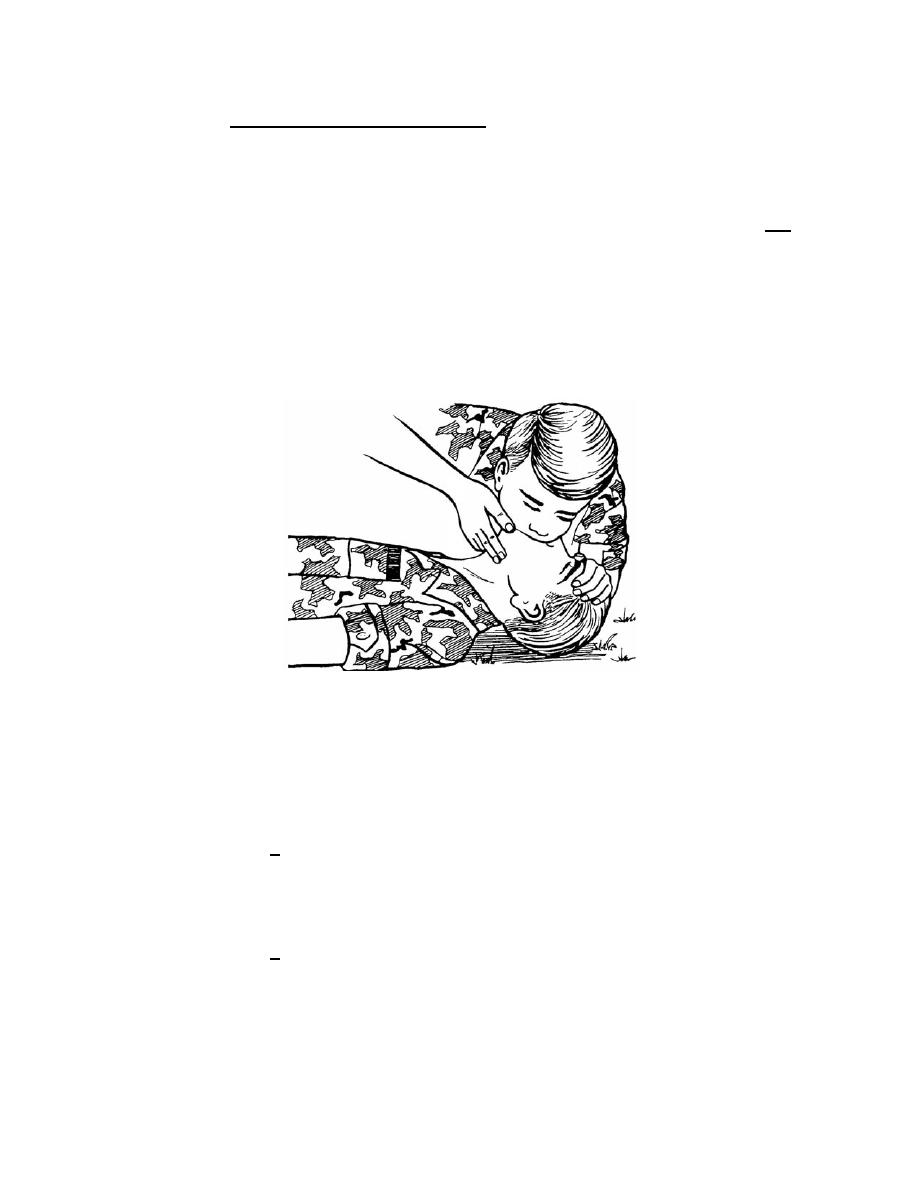
(2) Mouth-to-nose rescue breathing. Use this technique in the following
situations: impossible to open the casualty's mouth; casualty's mouth is seriously
injured; or difficult to achieve a tight seal on the casualty's mouth. Open the casualty's
airway and follow this procedure for mouth-to-nose rescue breathing:
(a) Close the casualty's mouth completely. Use your hand that is not
on the casualty's forehead to lift his jaw and close his mouth. It is important that no air
escape through the casualty's mouth when you perform ventilations.
(b) Give two quick, full breaths. Take a deep breath, seal your lips
around the casualty's nose and blow into his nose. (See figure 1-6.) Be sure the two
quick breaths are given with three seconds. Observe the casualty's chest as you
administer the two breaths.
Figure 1-6. Administering mouth-to-nose rescue breathing.
(c) Remove your mouth from the casualty's nose. Either open his
mouth or separate his lips so that he can exhale passively.
(d) Evaluate the effectiveness of the two breaths:
1 If the casualty's chest did not rise and fall, try opening his airway
more and administer two breaths again. If this does not work, check for an upper airway
obstruction and remove any blockage. Then, continue administering breaths until the four
quick breaths cause the chest to rise.
2 If the casualty starts to breathe on his own, begin looking for
injuries and treat them. Be prepared to resume rescue breathing in case the casualty
stops breathing again.
MD0571
1-13


 Previous Page
Previous Page
